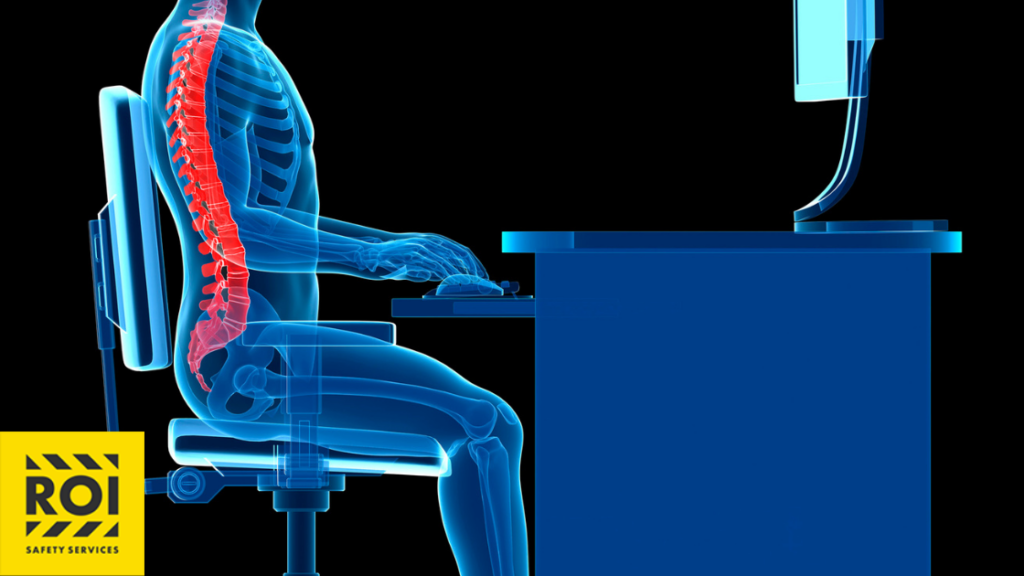
We GUARANTEE we will match anyone’s price and beat it by 10%!
We GUARANTEE we will match anyone’s price and beat it by 10%!

In today’s fast-paced work environment, understanding ergonomics is crucial for maintaining a healthy and productive office space. Poor ergonomic practices can lead to discomfort, decreased efficiency, and long-term health issues. OSHA’s Office Safety Guidelines provide essential insights into creating a workspace that promotes well-being and minimizes the risk of injury.
By focusing on proper workstation setup, posture, and equipment use, these guidelines help employers and employees alike recognize the importance of ergonomics. Implementing these practices not only enhances comfort but also boosts overall morale and productivity. As organizations strive to foster a safer work environment, understanding and applying OSHA’s recommendations becomes more vital than ever.

Understanding ergonomics in the workplace involves designing workspaces that enhance comfort and efficiency. Ergonomics focuses on adapting the environment to fit the worker’s needs, reducing strain and injury risks associated with repetitive tasks or improper body positioning.
Proper workstation setup includes key elements. Height-adjustable desks allow workers to alternate between sitting and standing. Monitor placement should align with eye level to prevent neck strain. Keyboard and mouse placement require a neutral wrist position, promoting better forearm alignment.
Posture plays a crucial role in workplace ergonomics. Encouraging workers to sit with their backs against chairs that offer lumbar support can alleviate discomfort. Feet should rest flat on the floor; using a footrest can enhance stability. Staying mindful of posture during tasks supports overall well-being.
Equipment use also influences ergonomic practices. Selecting chairs that promote proper posture and using tools designed with ergonomic principles can minimize fatigue. Implementing regular breaks encourages movement, further reducing the risk of musculoskeletal disorders.
Employers benefit from incorporating ergonomic principles. Increased comfort typically leads to higher productivity levels and reduced absenteeism. OSHA Training programs, like those offered by ROI Safety Services in California, ensure organizations understand and apply OSHA’s Office Safety Guidelines effectively. By prioritizing ergonomics, workplaces foster a healthier, more engaged workforce.
OSHA’s Office Safety Guidelines play a crucial role in fostering safe and efficient work environments. These guidelines focus on ergonomics, which can greatly enhance employee well-being and overall workplace effectiveness.
OSHA aims to prevent workplace injuries through specific ergonomic strategies. Key goals include:
Implementing OSHA’s Office Safety Guidelines significantly impacts employee health and productivity. Key aspects include:
By adhering to OSHA’s guidelines, organizations can create safer, healthier workplaces that encourage productivity and protect employees’ long-term health.
Understanding key ergonomic principles enhances workplace safety and health. Proper ergonomic practices lead to increased comfort, productivity, and overall employee well-being.
Proper posture supports musculoskeletal health. Employees should maintain a neutral body position, keeping their back straight, shoulders relaxed, and elbows close to their body. Chair height should allow feet to rest flat on the floor or on a footrest. Monitor placement should ensure the top of the screen aligns with eye level, reducing neck strain. Wrist position is important while typing; wrists must remain straight to avoid discomfort. Regular changes in posture and using tools like lumbar support can contribute to reducing fatigue and injury risk.
Effective workstation design minimizes strain and promotes productivity. Key elements include adjustable desks to accommodate standing or sitting positions, ergonomic chairs with lumbar support, and adequate lighting to reduce glare on screens. Monitor stands should raise screens to eye level, while keyboard and mouse placement should allow elbows to remain at a 90-degree angle. Adequate space allows for free movement and easy access to frequently used items. Employers should continually assess workstation setups, ensuring they align with ergonomic standards to foster a safe working environment.
Understanding common office ergonomic risks helps in fostering a safer workplace. Identifying these risks enables employers and employees to take proactive measures.
Repetitive strain injuries (RSIs) occur from the extended use of muscles, tendons, and nerves involved in repetitive motions. Common activities leading to RSIs include typing, using a mouse, and performing manual tasks. Symptoms often consist of pain, tingling, and reduced mobility in the affected areas, especially the wrists, shoulders, and neck. Key measures to prevent RSIs include using ergonomic keyboards and mice, maintaining proper posture, and incorporating regular breaks to rest hands and wrists.
Eye strain often results from prolonged screen time without breaks, leading to discomfort and reduced productivity. Symptoms of eye strain include blurred vision, dry eyes, and headaches. Adjusting monitor settings can aid in reducing glare and improve brightness. Placing monitors at an appropriate distance (20-30 inches away) and at eye level helps maintain a neutral head position. Employers should encourage the 20-20-20 rule, which involves looking at something 20 feet away for 20 seconds every 20 minutes, to alleviate visual discomfort and promote eye health.
Implementing ergonomic solutions involves a strategic approach focused on enhancing employee comfort and reducing injury risks in the workplace. Organizations can achieve this through ergonomic assessments and the use of appropriate tools and equipment.
Ergonomic assessments identify potential risks and optimize workstation setups. Trained professionals, such as those from ROI Safety Services, conduct evaluations of individual workstations, observing employees during their tasks. Assessments include measurements of desk height, monitor level, and chair adjustments. Recommendations follow, addressing specific issues, like adjusting keyboard placement or recommending adjustable chairs. Regular reassessments ensure continued adherence to ergonomic principles as tasks and employee needs evolve.
Utilizing the right tools and equipment enhances ergonomic effectiveness. Key items include:
Organizations can foster a safer work environment by investing in these ergonomic tools, leading to improved employee satisfaction and productivity.
Embracing OSHA’s Office Safety Guidelines is vital for fostering a healthier workplace. By prioritizing ergonomic practices, organizations can significantly reduce the risk of musculoskeletal disorders and enhance employee comfort.
Investing in appropriate equipment and making necessary adjustments to workstations not only boosts productivity but also contributes to higher job satisfaction and morale.
As the understanding of ergonomics evolves, employers must remain proactive in implementing these strategies. Ultimately, a commitment to ergonomics leads to a safer and more efficient work environment that benefits both employees and the organization as a whole.
Ergonomics is the study of designing workspaces and tasks to fit the capabilities and limitations of workers. Proper ergonomic practices aim to enhance comfort, efficiency, and safety, reducing the risk of discomfort and injury while promoting productivity.
Ergonomics is vital because poor practices can lead to discomfort, reduced efficiency, and long-term health problems. Focusing on ergonomic principles helps improve workplace comfort, morale, and overall productivity, allowing employees to work more effectively and comfortably.
OSHA’s Office Safety Guidelines focus on ergonomic principles to enhance employee well-being. They offer recommendations for workstation setup, proper posture, safe equipment use, and the need for regular breaks to minimize musculoskeletal disorders and improve workplace safety.
To set up an ergonomic workstation, ensure your chair has lumbar support, your feet are flat on the floor, and your monitor is at eye level. Use a height-adjustable desk, keep your wrists neutral while typing, and position tools within easy reach to maintain comfort.
Common ergonomic risks include repetitive strain injuries (RSIs), eye strain, and visual discomfort. RSIs occur from repetitive tasks, while prolonged screen time can lead to eye strain. Incorporating ergonomic tools and taking regular breaks can minimize these risks.
Employers can promote ergonomic practices by providing ergonomic assessments, investing in proper tools like adjustable chairs and desks, training employees on best practices, and encouraging regular breaks. Regular evaluations of workstation setups help maintain compliance with ergonomic standards.
Essential ergonomic tools include adjustable desks, ergonomic chairs, keyboard trays, document holders, and wrist-support mouse pads. Investing in these tools can significantly enhance comfort and productivity while minimizing injury risks for employees.
The 20-20-20 rule is a guideline to reduce eye strain during prolonged screen time. It suggests that for every 20 minutes spent looking at a screen, take a 20-second break to look at something 20 feet away, helping to alleviate visual discomfort.
To reduce fatigue, take regular breaks, practice good posture, and ensure your workspace is ergonomically set up. Incorporating movement into your routine, staying hydrated, and managing workload can also help maintain energy levels throughout the day.
